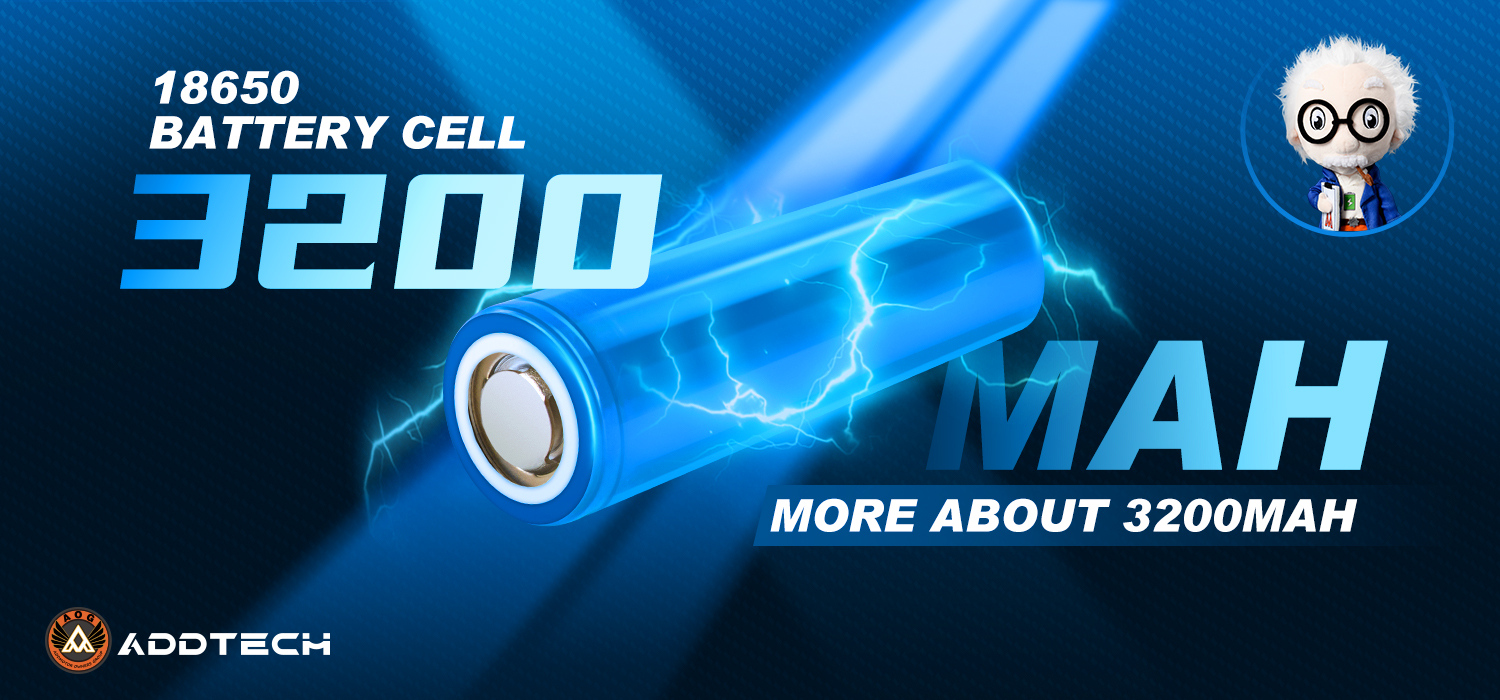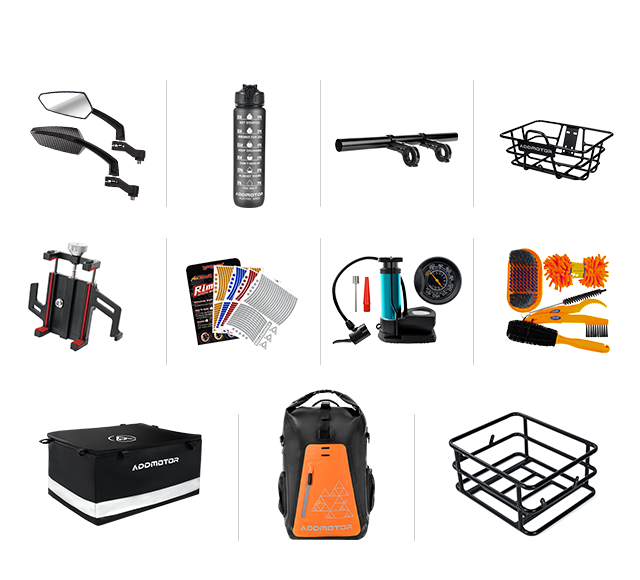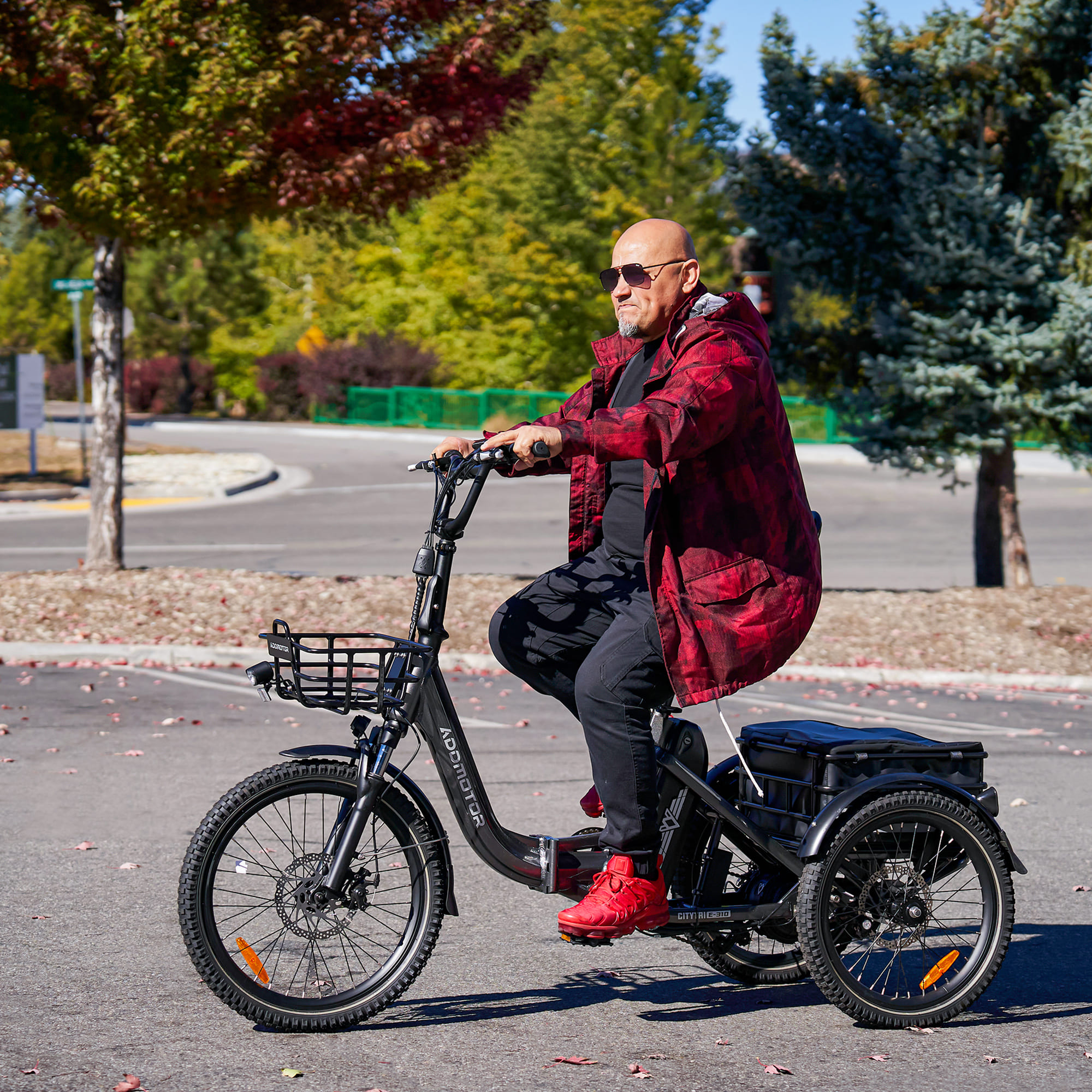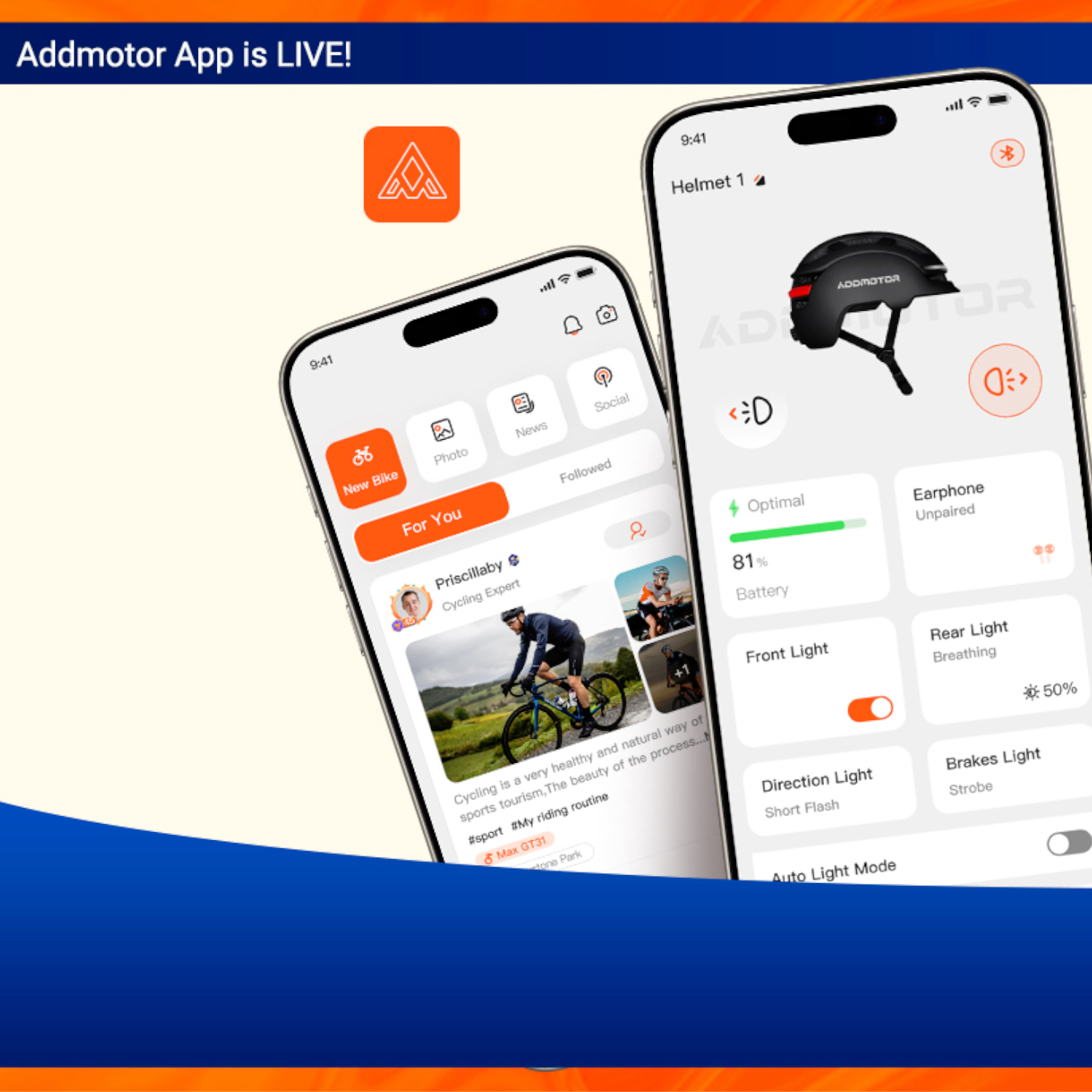ADDTECH | Best 18650 Li-ion Battery Brand - 3200mAh Battery
Explore the ultimate guide about, which is the best 3200mah battery. A comparison of three top-notch 18650 3200mAh batteries like LG, Samsung, and Panasonic.
By Addmotor | 30 January 2024 | 0 Comments
No doubt, 3200mAh 18650 batteries are a popular choice, known for their compact size and impressive capacity. Among the various choices available, the 3200mAh capacity is notable for balancing performance and longevity.
But, which is the best 3200mah 18650 battery?
In this article, we'll conduct a detailed analysis of three prominent brands offering 3200mAh 18650 batteries: LG, Samsung, and Panasonic; assisting you in selecting the best battery for your needs.

Now, let’s dissect the specifications of LG's INR18650MH1, Samsung's INR18650-32E, and Panasonic's NCR18650BD, presenting a comprehensive comparison to aid your decision-making process-
♦ Weight:
Weighing in at 49g, LG INR18650MH1 and Panasonic NCR18650BD both batteries are relatively lightweight. This makes them an ideal choice for portable devices like smartphones, laptops, and drones where minimizing weight is essential for increasing overall runtime and enhancing convenience across various applications.
Samsung's battery, slightly heavier at 50g, still maintains a reasonable weight, ensuring portability without compromising on capacity. The difference in weight is negligible and does not significantly impact the batteries' performance.
♦ Constant Charging Current:
Charge current, often referred to as "current," is a measure of how quickly a battery can be charged. It is commonly expressed in amps, where higher values indicate faster charging speeds, while lower values imply slower charging times.
Here, LG leads in constant charging current with 0.5C (1550mA), followed by Samsung at 960mA, and Panasonic with the lowest at 900mA.
This implies that LG's battery can be charged more quickly and efficiently than the other two models, provided the charger can deliver the required current.
♦ Constant Charging Voltage:
Charge Voltage refers to the battery voltage when it's fully charged, or the voltage available at any given point during the charging process.
All three models have a constant charging voltage of 4.2V, but Panasonic’s model allows a slight variation of ±0.03V.
This means that Panasonic’s battery can tolerate some fluctuations in the voltage supply, which may be useful in some situations where the power source is unstable or noisy.
♦ Standard Charging Time:
When it comes to charging time, a shorter charging time is beneficial, particularly for devices that undergo frequent charging and require quick recharging.
In that case, with the same battery pack capacity (10.4Ah) as a prerequisite. The charging time for LG's model is specified as 2.5 hours, reflecting a relatively rapid charging process. On the other side, Samsung takes double that time at 5 hours, and Panasonic takes to charge at 8 hours, suggesting a slightly longer duration compared to LG and Samsung.
This is directly related to the constant charging current and voltage of each model, as well as the capacity of the batteries. The higher the capacity, the longer it takes to charge the battery fully.
Nevertheless, rapid charging can lead to higher heat generation and potentially diminish the battery's overall lifespan.
♦ Max Charge Current:
The maximum battery charging current refers to the minimum current value at which the batteries can charge under optimal conditions or how fast the battery can be charged. The max charge current is the maximum current that the battery can accept without damaging its internal structure or reducing its lifespan. And when the maximum charging current is higher, it tends to be more damaging to the battery pack.
Samsung leads with a max charge current of 3200mA, LG follows closely with 1.0C(3100mA), and Panasonic has the lowest max charge current labeled as just “0.5C”. This means that Samsung can use a charger with a higher charging current and thus shorten the charging time of the battery pack.
That means the Samsung model impresses with a high max charge current of 3200mA, making it suitable for handling devices with demanding power requirements and quick charging capability.
♦ Max Discharge Current:
It is the highest current at which the battery can be discharged continuously. This determines the battery's ability to deliver power rapidly, making it suitable for high-drain devices. This is one of the most important characteristics of a battery pack. The discharge current determines the performance of the battery pack at the same capacity.
Both LG and Panasonic have a max discharge current of 10A; however, Samsung has a continuous discharge capacity of up to 6,400mA and can go up to non-continuous levels of up to 9,600mA.
The maximum discharge current is the maximum current that the battery can deliver without affecting its performance or safety. So, LG and Panasonic's higher continuous discharge current makes it a strong contender for devices requiring sustained high power levels over extended periods.
♦ Internal Resistance:
The internal resistance is the measure of how much the battery resists the flow of current through it. Both Samsung and Panasonic boast lower internal resistance (≤35 mΩ) compared to LG’s ≤40 mΩ. The internal resistance of the battery is also closely related to its safety. The higher the internal resistance, the higher the temperature rise per unit of time, which means that the battery is less safe.
The lower the internal resistance, the more efficient the battery is, as less energy is wasted as heat, while a high internal resistance can also cause voltage sag, a battery to overheat, which means that the battery cannot maintain a stable voltage under high load. A low internal resistance can improve the performance and lifespan of the battery, as well as reduce the risk of thermal runaway.
Though all three models exhibit low internal resistance, still, with ≤35 mΩ Samsung and Panasonic contribute to effective energy flow and minimal heat generation during use.
♦ Operating Temperature Range:
The operating temperature range is the range of temperatures at which the battery can function normally without degrading its performance or safety. Extreme temperatures can affect the chemical reactions inside the battery, resulting in a reduced capacity, increased internal resistance, or even explosion.
Consistently exposing the battery to high temperatures, exceeding 45°C, can accelerate aging and pose safety risks, as it increases the likelihood of venting or bursting in lithium-ion batteries. To ensure safety and longevity, it's advisable to choose a battery with a higher Continuous Discharge Rating (CDR).
Samsung and LG batteries can be charged within a temperature range of zero to forty-five degrees Celsius. However, only Panasonic specifies a charging range between 10° to 45°C. Additionally, they all can be discharged between temperatures ranging from -20 to 60°C.
LG stands out with its impressive 1550mA charge current and quick charging time. Samsung, on the other hand, distinguishes itself with a higher continuous discharge current. Meanwhile, Panasonic offers a reliable option contributing to an effective energy flow.
So, it can be said that, ultimately, the choice of the best 3200mAh battery depends on the specific requirements of the device you are going to use it for and its intended application. Choose the one that aligns with your specific needs, ensuring a seamless power supply for your devices.
But, which is the best 3200mah 18650 battery?
In this article, we'll conduct a detailed analysis of three prominent brands offering 3200mAh 18650 batteries: LG, Samsung, and Panasonic; assisting you in selecting the best battery for your needs.

The Best 3200mah Battery
The initial consideration should be the battery brand when choosing a 3200mah 18650 battery for your device or project. There are three major brands that you can rely on for delivering quality, consistency, and accurately rated batteries:- LG INR18650MH1
- Samsung INR18650-32E
- Panasonic NCR18650BD
These are three models of 3200mah 18650 batteries, which are rechargeable lithium-ion batteries that have a cylindrical shape that comes in a diameter of approx. 18 mm, and a height of 65 mm. They are commonly used in various applications, such as laptops, flashlights, electric vehicles, and power tools.Now, let’s dissect the specifications of LG's INR18650MH1, Samsung's INR18650-32E, and Panasonic's NCR18650BD, presenting a comprehensive comparison to aid your decision-making process-
| Parameter | LG INR18650MH1 | Samsung INR18650-32E | Panasonic NCR18650BD |
| Weight | 49g | 50g | 49g |
| Constant Charging Current | 0.5C(1550mA) | 960mA | 900mA |
| Constant Charging Voltage | 4.2V | 4.2V | 4.2V±0.03V |
| Standard Charging Time | 2.5 hours | 5 hours | 8 hours |
| Max Charge Current | 1.0C(3100mA) | 3200mA | 0.5C |
| Max Discharge Current (continuous / non-continuous) |
10A | 6,400mA / 9,600mA | 10A |
| Internal Resistance | ≤ 40 mΩ | ≤ 35 mΩ | ≤ 35 mΩ |
| Operating Temperature Range | Charge: 0-45 °C Discharge: -20-60°C |
Charge : 0-45°C Discharge : -20-60°C |
Charge: 10 to 45° C Discharge: -20-60° C |
♦ Weight:
Weighing in at 49g, LG INR18650MH1 and Panasonic NCR18650BD both batteries are relatively lightweight. This makes them an ideal choice for portable devices like smartphones, laptops, and drones where minimizing weight is essential for increasing overall runtime and enhancing convenience across various applications.
Samsung's battery, slightly heavier at 50g, still maintains a reasonable weight, ensuring portability without compromising on capacity. The difference in weight is negligible and does not significantly impact the batteries' performance.
♦ Constant Charging Current:
Charge current, often referred to as "current," is a measure of how quickly a battery can be charged. It is commonly expressed in amps, where higher values indicate faster charging speeds, while lower values imply slower charging times.
Here, LG leads in constant charging current with 0.5C (1550mA), followed by Samsung at 960mA, and Panasonic with the lowest at 900mA.
This implies that LG's battery can be charged more quickly and efficiently than the other two models, provided the charger can deliver the required current.
♦ Constant Charging Voltage:
Charge Voltage refers to the battery voltage when it's fully charged, or the voltage available at any given point during the charging process.
All three models have a constant charging voltage of 4.2V, but Panasonic’s model allows a slight variation of ±0.03V.
This means that Panasonic’s battery can tolerate some fluctuations in the voltage supply, which may be useful in some situations where the power source is unstable or noisy.
♦ Standard Charging Time:
When it comes to charging time, a shorter charging time is beneficial, particularly for devices that undergo frequent charging and require quick recharging.
In that case, with the same battery pack capacity (10.4Ah) as a prerequisite. The charging time for LG's model is specified as 2.5 hours, reflecting a relatively rapid charging process. On the other side, Samsung takes double that time at 5 hours, and Panasonic takes to charge at 8 hours, suggesting a slightly longer duration compared to LG and Samsung.
This is directly related to the constant charging current and voltage of each model, as well as the capacity of the batteries. The higher the capacity, the longer it takes to charge the battery fully.
Nevertheless, rapid charging can lead to higher heat generation and potentially diminish the battery's overall lifespan.
♦ Max Charge Current:
The maximum battery charging current refers to the minimum current value at which the batteries can charge under optimal conditions or how fast the battery can be charged. The max charge current is the maximum current that the battery can accept without damaging its internal structure or reducing its lifespan. And when the maximum charging current is higher, it tends to be more damaging to the battery pack.
Samsung leads with a max charge current of 3200mA, LG follows closely with 1.0C(3100mA), and Panasonic has the lowest max charge current labeled as just “0.5C”. This means that Samsung can use a charger with a higher charging current and thus shorten the charging time of the battery pack.
That means the Samsung model impresses with a high max charge current of 3200mA, making it suitable for handling devices with demanding power requirements and quick charging capability.
♦ Max Discharge Current:
It is the highest current at which the battery can be discharged continuously. This determines the battery's ability to deliver power rapidly, making it suitable for high-drain devices. This is one of the most important characteristics of a battery pack. The discharge current determines the performance of the battery pack at the same capacity.
Both LG and Panasonic have a max discharge current of 10A; however, Samsung has a continuous discharge capacity of up to 6,400mA and can go up to non-continuous levels of up to 9,600mA.
The maximum discharge current is the maximum current that the battery can deliver without affecting its performance or safety. So, LG and Panasonic's higher continuous discharge current makes it a strong contender for devices requiring sustained high power levels over extended periods.
♦ Internal Resistance:
The internal resistance is the measure of how much the battery resists the flow of current through it. Both Samsung and Panasonic boast lower internal resistance (≤35 mΩ) compared to LG’s ≤40 mΩ. The internal resistance of the battery is also closely related to its safety. The higher the internal resistance, the higher the temperature rise per unit of time, which means that the battery is less safe.
The lower the internal resistance, the more efficient the battery is, as less energy is wasted as heat, while a high internal resistance can also cause voltage sag, a battery to overheat, which means that the battery cannot maintain a stable voltage under high load. A low internal resistance can improve the performance and lifespan of the battery, as well as reduce the risk of thermal runaway.
Though all three models exhibit low internal resistance, still, with ≤35 mΩ Samsung and Panasonic contribute to effective energy flow and minimal heat generation during use.
♦ Operating Temperature Range:
The operating temperature range is the range of temperatures at which the battery can function normally without degrading its performance or safety. Extreme temperatures can affect the chemical reactions inside the battery, resulting in a reduced capacity, increased internal resistance, or even explosion.
Consistently exposing the battery to high temperatures, exceeding 45°C, can accelerate aging and pose safety risks, as it increases the likelihood of venting or bursting in lithium-ion batteries. To ensure safety and longevity, it's advisable to choose a battery with a higher Continuous Discharge Rating (CDR).
Samsung and LG batteries can be charged within a temperature range of zero to forty-five degrees Celsius. However, only Panasonic specifies a charging range between 10° to 45°C. Additionally, they all can be discharged between temperatures ranging from -20 to 60°C.
Conclusion
Upon evaluating the key specifications and parameters of the three best 3200mAh 18650 batteries, it's evident that each brand possesses unique strengths to the table.LG stands out with its impressive 1550mA charge current and quick charging time. Samsung, on the other hand, distinguishes itself with a higher continuous discharge current. Meanwhile, Panasonic offers a reliable option contributing to an effective energy flow.
So, it can be said that, ultimately, the choice of the best 3200mAh battery depends on the specific requirements of the device you are going to use it for and its intended application. Choose the one that aligns with your specific needs, ensuring a seamless power supply for your devices.
Leave a Reply
Your email address will not be published.Required fields are marked. *
Latest Stories




